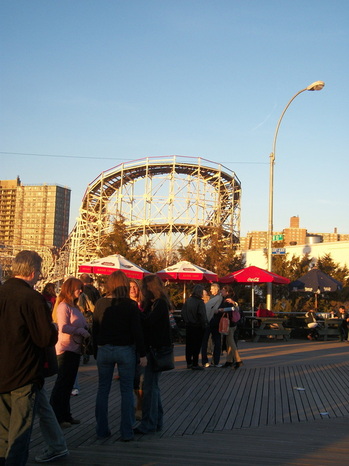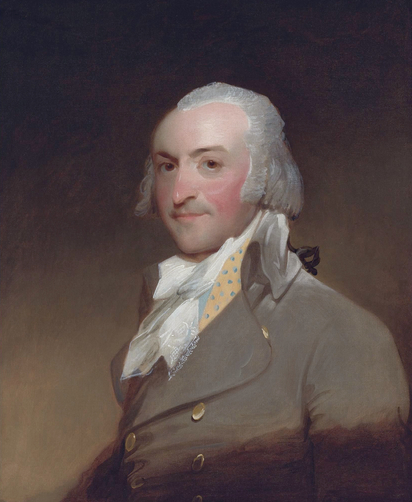|
On this day, June 30th, 1966, Michael Gerard Tyson better known as Mike Tyson was born in Brooklyn, New York. Tyson is a former undisputed heavyweight champion of the world and holds the record as the youngest boxer to win the WBC, WBA, and IBF heavyweight titles at 20 years old. Tyson’s controversial behaviour in and out of the ring has caused him problems leading to a three year prison sentence and being disqualified for a TKO rematch in 1997 after biting off part of Evander Holyfield’s ear.
0 Comments
On this day on June 29th, 1928, the Outerbridge Crossing and Goethals Bridge in Staten Island, New York are both opened. The Outerbridge Crossing is named for Eugenis Harvery Outerbridge the first chairman of the Port Authority. The Outerbridge Crossing connects drivers from Staten Island to Perth Amboy, New Jersey. The Goethals Bridge is named for is named for Major General George Washington Goethals and connects to Elizabeth, New Jersey. On this day, June 28th, 1969 the Stonewall Riots began in New York City marking the start of the Gay Rights Movement. A serious of spontaneous, violent demonstrations took place after a police raid took place at the Stonewall Inn in Greenwich Village. The Stonewall Riots are considered the single most important event leading to the gay liberation movement and the fight for gay and lesbian rights. The Stonewall Inn closed in late 1969 but reopened under its original name in 2007. On this day, June 27th, 1895 the first U.S. passenger train to use electric locomotives runs from Washington, D.C. to New York City. The Baltimore and Ohio Railroad’s Royal Blue operated in partnership with Reading Railroad and Central Railroad of New Jersey. Between the 1890s and World War I the Royal Blue lines were noted for their luxury, elegance, and speed. Trains ran six times daily from New York to Washington. It wasn’t until April 26th, 1958 that the Royal Blue line was discontinued. On this day, June 26th, 1927 the Coney Island Cyclone opened. The Cyclone was preceded in Coney Island by the 1925 Thunderbolt, and the 1926 Tornado, which were both very successful. With $100,000 to invest, Jack and Irving Rosenthal hired Vernan Keenan to design a new roller-coaster on the land they had purchased at Surf Avenue and West 10th Street. The location had previously been the location where the Switchback Railway had been. Construction was supervised by Harry C. Baker, and was completed by National Bridge Company, along with Cross, Austin, & Ireland. The final costs are estimated to have been between $146,000 and $176,000. The Cyclone was landmarked by New York City on July 12, 1988, listed on the New York State Register of Historic Place on June 31, 1991, and finally placed on the National Register on June 26, 1991. The Cyclone has been copied a number of times, at least four times at Six Flags parks (though two have been removed), and there are at least three replicas overseas. At the time of it's opening, the Cyclone cost a mere 25¢, a far cry from the current $8.00 it costs to ride it. On this day, June 25, in 1906, Stanford White was killed. Stanford White was the son of a Shakespearian Actor who rose to become a prominent Architect, and a partner in the preminent Beau-Art architectural firm, McKim, Mead & White. White's work in New York City included the second Madison Square Garden (demolished in 1925), The Cable Building, Madison Square Presbyterian Church, the New York Herald Building (demolished in 1894), the First Bowery Savings bank at Bowery and Grand Street, the Washington Square Arch, the Judson Memorial Church on Washington Square, and the Century Club. He also designed a number of the Fifth Avenue Mansions for people such as the Astors and the Vanderbilts. White was known as something of a ladies man, his apartment was rumoured to have a red velvet swing in which he would have women "in varying states of undress" entertain him. One such woman was Evelyn Nesbit. Nesbit was an actress and artist's model, White met in 1901, and with whom White had an affair when she was 16, and he was 47. Nesbit subsequently married Harry Kendall Thaw, a Pittsburgh coal and railroad baron. on April 4, 1905. It was rumoured that Thaw was a cocaine addict with sadistic tendencies. He was said to be possessive of Nesbit and obsessive about her relationship with White. On June 25, 1906, Nesbit and her husband were in New York, dining at the Café Martin, when they ran into Stanford White. They again ran into him at Madison Square Garden's roof theater. During a song, "i Could Love a Million Girls," Thaw fired three shots point blank into White's face. Accounts differed as to whether Thaw said, "You ruined my life," or "You ruined my wife." The Trial that followed was called "The Trial of Century." Thaw pleaded temporary insanity, and his mother promised Nesbit a quiet divorce with a million dollar settlement if Nesbit would testify that White had raped her. Nesbit and Thaw did divorce, but Nesbit never saw a dime. Many years later Nesbit indicated that "Stanny" was the only man she had ever loved. On this day, June 23rd, 1810 the Pacific Fur Company was founded by John Jacob Astor in New York City. In 1811, the company established a trading post in Astoria, Oregon. Astor's ambitious plan included a trade ring that included New York City, the old Oregon Country, Russian Alaska, Hawaii and China. Ships were to load Indian trade goods in New York, stopping in Hawaii for provisions the ship would continue on to Columbia and Russian Alaska picking up furs and pelts traded for porcelain, silk, cloth and spices in Canton China and then transported back to New York. At the time, China was the best market for furs. In the lead up to the War of 1812, the Pacific Fur Company found itself facing threats from British warships and difficulty protecting posts. In October of 1813, the Pacific Fur Company and its assets were sold to the Montreal based North West Company. John Jacob Astor had built a fur trading empire. While trading furs was certainly the most profitable, Astor began fur goods shops in New York City early on. Later in life he diversified investing in Manhattan real estate and becoming a patron of the arts. It is also said that when trading restrictions and other challenges faced the fur trade, Astor became involved in smuggling opium. On this day, June 24th, 1797, John Joseph Hughes was born in Annaloghan, County Tyrone, Province of Ulster, Ireland. In 1817, Hughes came to the United States. He settled in Chambersburg, PA, where his father had emigrated a year earlier. He attempted to attend Mount St. Mary's College in Maryland, with out success on his own. He was eventually was hired by Fr. John Dubois as a gardener. During this period he befriended and impressed Mother Elizabeth Ann Seton who convinced Dubois to assist Hughes's application to Mount St. Mary's. Hughes was admitted to Mount St. Mary's in September 1820, as a regular student. In October, 1826, Hughes was ordained to the priesthood by Bishop Henry Conwell, of the Diocese of Philadelphia, to which Hughes had attached himself. After attending to a number of posts in the Philadelphia Diocese, as well as at St. Mary's, he was consecrated bishop on January 7, 1838 with the titular see of Basileopolis. On December 20, 1842, Hughes was named Bishop of the Diocese of New York, and when the diocese was elevated to the status of archdiocese, on July 19, 1850, he became the first Archbishop of New York. Among the various causes championed by Hughes, his influence is felt especially in the realm of higher education. He founded Manhattan College, St. John's College (now Fordham University0, Fordham Prep, the Academy of Mount St. Vincent (not the College of Mount Saint Vincent), and Marymount College. He also oversaw the start of construction of The Cathedral of St. Patrick on Fifth Avenue. Archbishop Hughes died on January 3, 1864, and was buried at The Basilica of Saint Patrick's Old Cathedral, (also known as Old St. Patrick's) on Mulberry Street below Houston Street. His remains were then exhumed in 1883, and interred in the crypt under the alter of the new cathedral On this day, June 22nd, 1981, Mark David Chapman plead guilty to killing John Lennon. Chapman, who had been charged with Second Degree Murder, initially plead not guilty by reason of insanity in January 1981. Chapman told his attorney, Jonathan Marks, to drop the defence of insanity. Marks was not convinced of Chapman's sanity, and ability to make such a decision, and requested an additional determination of Chapman's competence to make such a decision. Judge Dennis Edwards denied Marks's request for the further assessment, and declared Chapman competent to plead guilty. On August 24th, 1981, a sentencing hearing was held. On this day, June 21st, 1948, Columbia Records introduced the LP Record. Phonograph records had been derived from the cylinder phonograph developed by Thomas Edison. By 1948, most home phonograph records were made of Shellac, which was "Scratchy" due to its abrasive nature. They also played at 78 RPM (revolutions per minute). This meant that a 12 inch disc would have a maximum playable duration of roughly five minutes for each side. The new format was made of relatively smooth vinyl, and had a "micro-groove" It was designed to play at the slower speed of 33 1/3 RPM. These developments allowed each side to play for a little over 20 minutes. The micro-groove was the only real innovation, as vinyl and the 33 1/3 RPM had been used for specialized purposes previously. On June 21, 1948, Columbia Records held a press conference at the Waldor-Astoria revealing their new consumer product. |
On this day in Old New York
A Daily Feature where we focus on a historical event related to NYC that occurred on this day. Archives
February 2021
Categories
All
For Available Dates please click Here
|














 RSS Feed
RSS Feed